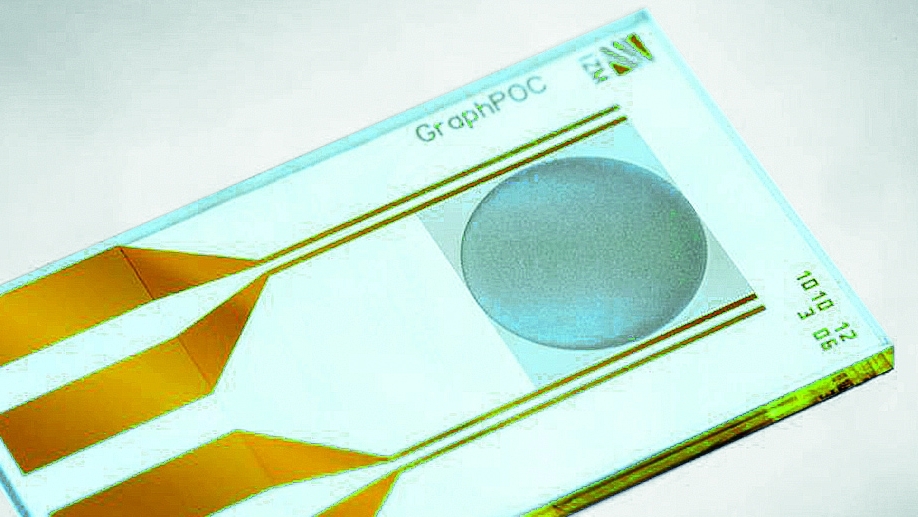Researchers at the Fraunhofer Institute for Reliability and Microintegration IZM are developing biosensors based on graphene oxide that make it possible to detect bacterial and viral infections in just 15 minutes.
Since April 2018, researchers at Fraunhofer IZM in Berlin have been working on a graphene oxide-based sensor platform in the Graph-POC project, which aims to solve precisely these challenges in the diagnosis of infections. Only a drop of blood or saliva is needed to carry out an exact analysis. The drop is placed on the sensor surface and a result transmitted via electrical signals appears within a few minutes - at the GP's office.
Lengthy laboratory blood tests are therefore replaced by a rapid test that provides certainty within just 15 minutes. The special feature of the sensor platform is the material used: graphene oxide is characterized in particular by the fact that it is an electrically conductive and biocompatible material and allows particularly reliable detection. In microelectronics, it has so far only been used in its original 2D form. However, the researchers at Fraunhofer IZM are now applying it in a 3D structure in the form of flakes. This three-dimensional form increases the measuring surface and also the accuracy of the measurements.
Until the rapid tests are ready for use, the graphene oxide-based sensors must be embedded in a plastic carrier and the reliability of the system tested. Although the project is scheduled to run until spring 2021 with regard to the detection of infections, the researchers do not expect to be able to verify the sensor in relation to the coronavirus for another year.
Source: Fraunhofer IZM


